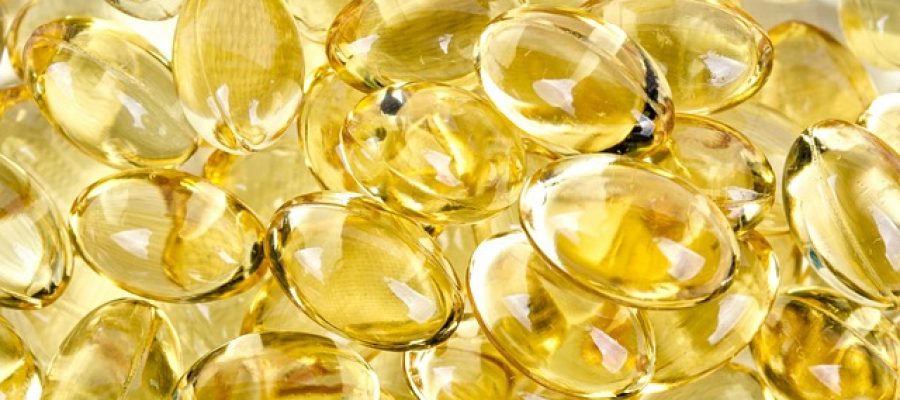Should you be taking a vitamin-D supplement? “Just eat a varied diet, and you’ll get all the nutrients you need.” This has been the nutritional advice we have heard for years. Is this true? I am not a doctor, but I can tell you a few facts, some new findings, and you decide yourself.
Why do we need vitamin D? Vitamin D plays a vital role in maintaining normal calcium levels in the blood and absorbing calcium and phosphate, which is necessary for the structure and strength of teeth and the bones. But it also has other important tasks such as strengthening the immune system and counteracting inflammation and fighting some autoimmune diseases (diabetes, MS, gluten intolerance, etc.) and even some cancers (prostate, breast and colon cancer, etc.)
What can signs of deficiency be? Scientists have also started seeing a correlation between severe Corona symptoms and lower vitamin D-levels, which is very interesting. Other more diffuse symptoms of a lack can be tiredness, leg pain, lowered immune system, thinning hair, muscle weakness and soreness, back pain, slow wound healing, headaches, mood swings, and depression.
How do we obtain the vitamin? We can get the vitamin in two ways, either from food or from the sun. It might surprise you that as much as 80% of our intake actually takes place through sunlight hitting our skin, which then produces vitamin D. We can store the vitamin in the liver to be used in case of deficiency. From November to March, we in the Nordic countries do not get enough sunlight to produce it through our skin and become dependent on the content in the food and the stores in the liver. It is believed that half of us in the Nordic countries are deficient at the end of winter. This is why the essential vitamin might need to be supplemented up north, and not just for counteracting osteoporosis? Maybe that is why we crave the rays so much when they return in April? Our daily supply is covered by as little as 15 min uncovered sun exposure in the summer.
What foods contain vitamin D? It’s found in fatty fish, fortified dairy products (Sweden) fortified orange juice (USA) but can also be found in eggs, meat, mushrooms like chanterelles shitake, and oat milk. All countries fortify differently, please check it out yourself. It is pretty much impossible to overload vitamin D by food and sunlight alone but is possible by supplements, so please keep to the regulations.
For what groups of people is this vitamin extra important and who might need supplementation? The darkness is not the sole reason for insufficient vitamin D production in the skin. It also affects people who spend a lot of time indoors, people with full-coverage clothing, those with darker skin color, and the elderly whose skin loses some of its ability to produce the vitamin. Other people with a risk of deficiency are pregnant women, vegans, vegetarians, and those who do not eat fatty fish or fortified products who then can not meet their needs through the diet as easily. So all of these groups may need to take supplements.
Substantial deficiency in children leads to softened skeleton and deformities, called Rakitis. But even adults can get bone softening as well, which is called Osteomalacia. According to Swedish recommendations, all children up to 2 years and dark-skinned children up to 5 years should take supplementation. But the recommendations differ from country to country. For example, in Finland, a daily supplement is recommended all year round for those under 18, pregnant, breastfeeding, or those who do not consume vitamin D fortified products or eat fish regularly.
So the following should consider if they need supplementation:
- Children up to 2 years old and up to 5 years old if they have darker skin. This is not a may, they should! Why the skin color you may say, the skin protective mechanism of the darker skin makes it harder to produce vitamin- D, especially up here in the north.
- Vegans and vegetarians might want to seek out fortified products and or mushrooms to ensure they are adequately covered as they don’t eat fish, eggs, or meat. They have to rely on sunlight otherwise.
- People fully covered by clothing and people who don’t spend time outside. They will lose this 80% addition the sun provides and will need to get it through supplements as we can not get this much from food alone. Even worse If they don’t eat enough food as many elderly do.
- People over 65. With age, the skin’s ability to convert the sunrays to vitamin-D slows down. At the same time, this group tends to spend less time outdoors, which lessens the exposure even more. On top of this, their appetite seems to reduce, which in turn gives less nutrition.
When vitamin D is linked to so many different parts of our health and wellbeing, we need to make sure we get enough. Maybe it is not just the darkness but the lack of vitamin D that causes the winter depressions in Sweden? Possibly our stores in our liver have been used up by then?
Do I take vitamin D supplements? Absolutely, I always take them from September to April each year. I don’t want to be more susceptible to the flu, depression, and other ailments. Maybe you should try and pop a pill this year but in recommended doses of course.

